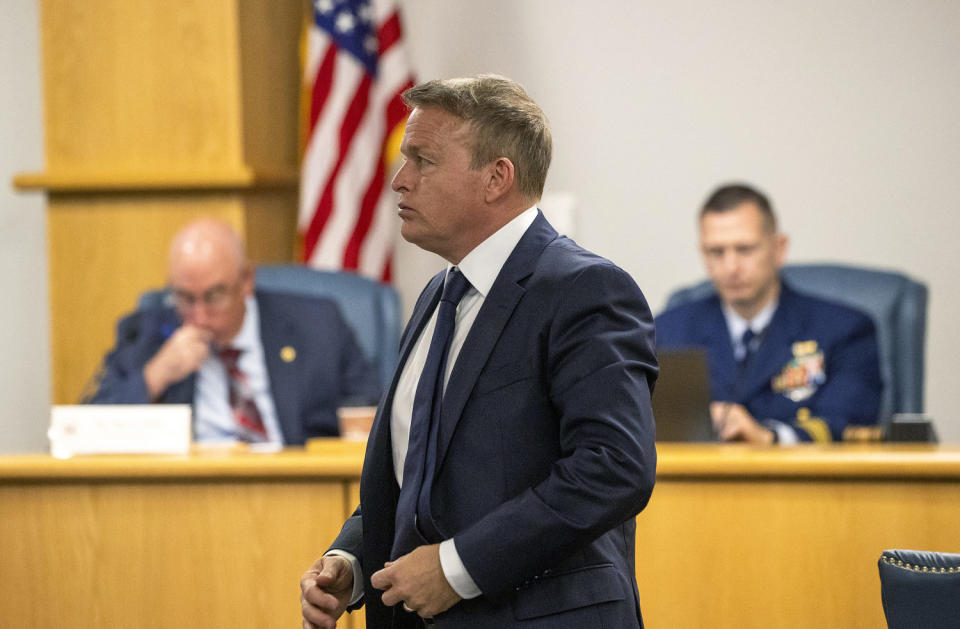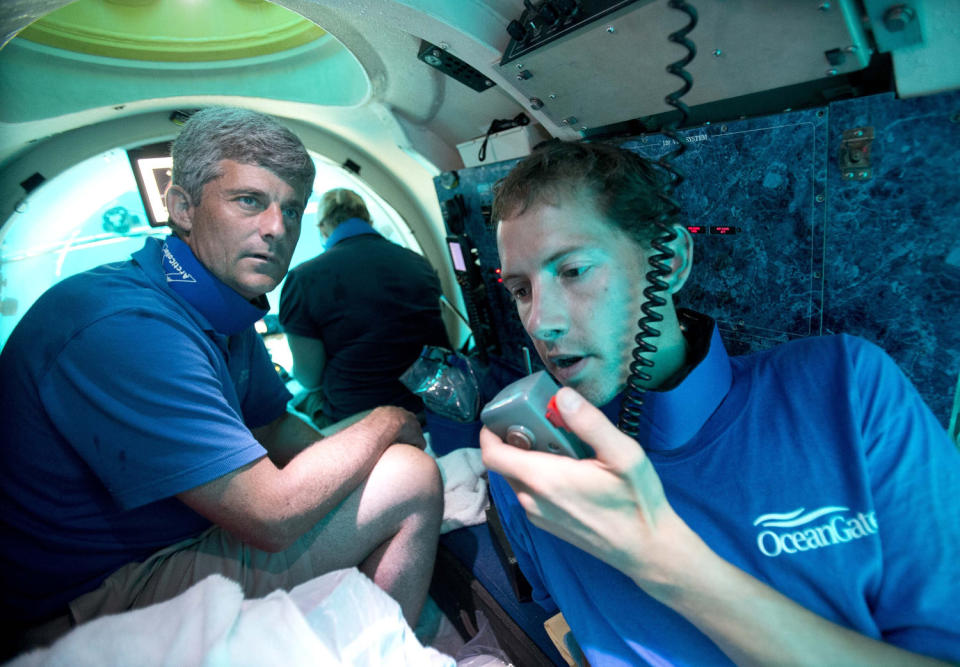In a desire to get a working submersible to the Titanic wreck site as fast as possible, the Titan was built at a risk to safety, with cost-cutting measures and poor engineering permitted by CEO Stockton Rush, a former employee said in scathing remarks Tuesday at a U.S. Coast Guard investigatory hearing.
“There was a big push to get this done. A lot of steps along the way were missed,” testified David Lochridge, former marine operations director of OceanGate, the Washington state company that operated the Titan deep-water vessel.
“The whole idea behind the company was to make money,” said Lochridge, who was fired from his role after about two years. “There was very little in the way of science.”


Rush was piloting the Titan with four others on board, some paying passengers, when it imploded in June 2023 during a diving tour of the Titanic at the bottom of the North Atlantic Ocean. All five were killed, including a renowned Titanic explorer and a father and his 19-year-old son.
Fifteen months after the fatal voyage, the Coast Guard’s Marine Board of Investigation is holding a two-week hearing in South Carolina to determine what led to the catastrophe and what safety recommendations can be made to federal and international regulatory agencies. Potential criminality could also be referred to the Justice Department.


Lochridge was made an operations director in January 2016 after moving his family from their native Scotland on a work visa that OceanGate helped procure. He testified that he was not directly involved with the design or construction of the Titan’s original hull, as his relationship with Rush broke down in summer 2016 after Lochridge said he “embarassed” his boss following a heated confrontation during an exploration mission to see the sunken ocean liner, the Andrea Doria.
But Rush still had him inspect the Titan as it was nearing completion in early 2018, Lochridge said.
What he found was “an abomination of a sub,” he said, and would later learn firsthand that much of the same materials were “reused” in a second Titan hull that was manufactured and ultimately involved in last year’s calamity.
“Stockton liked to do things on the cheap,” Lochridge testified.
Lochridge would go on to be fired in January 2018 as a result of voicing his concerns and appearing “anti-project,” he said.
His public comments on the second day of the Coast Guard hearing come after federal investigators opened Monday with new details from the implosion, including a photo of the Titan’s tail cone, and testimony from another top OceanGate executive, former Engineering Director Tony Nissen.
Nissen, who was hired in 2016, said he voiced concerns to Rush after the Titan’s original hull — made out of experimental carbon fiber, which has not been proven to repeatedly withstand deep-sea pressures — was compromised after it was struck by lightning during a test mission in 2018. The hull also suffered an unsalvageable crack, Nissen said, and he refused to sign off on another test mission the following year, prompting his firing.
Lochridge on Tuesday said he clashed with Nissen as well, indicating how OceanGate was struggling internally as it attempted to drum up business: convincing wealthy people to pay tens of thousands of dollars to go on deep-sea dives in its submersibles.
“It was all smoke and mirrors,” Lochridge said. “All the social media that you see about all these past expeditions, they always had issues with their expeditions.”


CEO ‘hit me’ on head during dive mission
Lochridge recounted a prior dangerous dive in the summer of 2016 when Rush piloted another of the company’s submersibles, Cyclops 1, on a trip to tour the Andrea Doria, the Italian ocean liner that sank off the coast of Massachusetts in 1956 after it collided with another ship.
Lochridge testified Tuesday that he told Rush he shouldn’t be in charge of that trip, but the CEO was adamant. (The submersible had gained attention when it was unveiled the previous year because it used a PlayStation controller for piloting.)
With three paying clients on board the Cyclops 1 during that journey, Rush steered the vessel in a reckless manner, Lochridge testified.
“‘Don’t tell me what to do,'” Rush said, according to Lochridge.
Rush then piloted the submersible directly toward the decaying ocean liner.
“He decided to go straight to the wreck,” Lochridge said, adding, “He came straight down hard on the bottom” and “basically drove it full speed.”
“Every time I went to take the controller from him, he pushed it farther and farther,” Lochridge said.
One of the passengers was in tears, Lochridge said, adding that Rush only relented control when a passenger shouted.
Upset, Rush threw the PlayStation controller and “he hit me on the side of my head,” Lochridge said.
Ultimately, Lochridge said, he scooped up the controller, which had a button come lose, and repaired it before piloting the Cyclops 1, which saw some damage, back up.
Once safe, the passengers cheered for Lochridge, he said.
“I embarrassed him in front of clients. He wasn’t happy,” Lochridge said of Rush. “I knew that was a turning point in our relationship.”
After Lochridge’s firing, OceanGate sued him in 2018 alleging breach of contract, including violating terms of his contractual employment by discussing confidential information with other employees and Occupational Safety and Health Administration representatives.
Lochridge filed a counterclaim lawsuit against OceanGate. The two sides later settled their dispute out of court.
Lochridge explained Tuesday that instead of paying money to OceanGate as part of a settlement, he signed a non-disclosure agreement; he was unable to speak freely about his employment until now, when the Coast Guard subpoenaed him.
Pursuing a counterclaim “was going nowhere,” Lochridge said, and his wife and him realized “it was causing more hurt for us.”
This article was originally published on NBCNews.com
